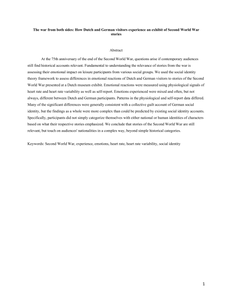The purpose of this study was to develop and evaluate an interprofessional identity measurement instrument based on Extended Professional Identity Theory (EPIT). The latter states that interprofessional identity is a social identity superordinate to a professional identity consisting of three interrelated interprofessional identity characteristics: belonging, commitment and beliefs. Scale development was based on five stages: 1) construct clarification, 2) item pool generation, 3) review of initial item pool, 4) shortening scale length (EFA to determine top four highest factor loadings per subscale; 97 dental and dental hygiene students), and 5) cross-validation and construct validity confirmation (CFA; 152 students and 48 teachers from six curricula). Explained variance of the EPIS was 65%. Internal consistency of the subscales was 0.79, 0.81 and 0.80 respectively and 0.89 of the overall scale. CFA confirmed three-dimensionality as theorized by EPIT. Several goodness-of-fit indexes showed positive results: CFI = 0.968 > 0.90, RMSEA = 0.039 < 0.05, and SRMR = 0.056 ≤ 0.08. The factor loadings of the CFA ranged from 0.58 to 0.80 and factors were interrelated. The Extended Professional Identity Scale (EPIS) is a 12-item measurement instrument with high explained variance, high internal consistency and high construct validity with strong evidence for three-dimensionality.
DOCUMENT

The internationalization of higher education has been driven by an increasingly globalized and interconnected world. One concept that embodies this internationalization process is global citizenship, which can be promoted through student mobility, internationalization-at-home, or other forms of intercultural learning. While global citizenship remains a broad and highly contested term, the increased interest of its role in higher education has inspired research in different fields. The aim of this paper is to provide a review of existing research approaches to studying global citizenship, and to formulate future research directions that may integrate these approaches into a holistic framework. By reviewing literature from different fields in the social sciences, we have identified three main research approaches: intercultural competence, social identification with a global community, and civic engagement. While each approach reflects an important dimension of global citizenship, they remain separate in the literature, complicating the understanding and application of global citizenship in higher education. Therefore, for each approach we present a general conceptualization and a brief overview of prior findings. We discuss how integrating these approaches can lead to a more holistic understanding of global citizenship and guide future avenues for research and practice in higher education.
DOCUMENT

At the 75th anniversary of the end of the Second World War, questions arise if contemporary audiences still find historical accounts relevant. Fundamental to understanding the relevance of stories from the war is assessing their emotional impact on leisure participants from various social groups. We used the social identity theory framework to assess differences in emotional reactions of Dutch and German visitors to stories of the Second World War presented at a Dutch museum exhibit. Emotional reactions were measured using physiological signals of heart rate and heart rate variability as well as self-report. Emotions experienced were mixed and often, but not always, different between Dutch and German participants. Patterns in the physiological and self-report data differed. Many of the significant differences were generally consistent with a collective guilt account of German social identity, but the findings as a whole were more complex than could be predicted by existing social identity accounts. Specifically, participants did not simply categorize themselves with either national or human identities of characters based on what their respective stories emphasized. We conclude that stories of the Second World War are still relevant, but touch on audiences’ nationalities in a complex way, beyond simple historical categories.
DOCUMENT
